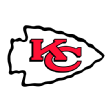The Miami Dolphins' offensive scheme change is going to work out nicely for Jaylen Waddle -- and we can see the evidence in the numbers.
In his first game in the Mike McDaniel system, Waddle ran more high value routes than he did a year ago and is set up to perform better in 2022 running deeper patterns than he did in his rookie year.
Welcome to Next Gen Stats corner: where each week we dive deep into the analytical weeds of football and weekly matchups to find small advantages for fantasy managers. This week, we'll talk routes, run stopping and sack opportunities. We're trying to find those few extra targets, yards per carry and sacks in Week 2 to bolster your fantasy squad or DFS lineup. Let's dive in.
Route Advantages

Upgrade: WR Jaylen Waddle, Miami Dolphins
In 2021 deep crosses, medium crosses, deep outs, digs and slices made up a combined 19% of Waddle's route portfolio, according to ESPN route metrics based on NFL Next Gen Stats player tracking data. But in 2022 those same five routes made up 56% of Waddle's routes run.
It's significant because those are five of the highest yards per route earning routes. Even though Waddle's air yards per target on Sunday was roughly the same as what it was a year ago, those routes run suggest that won't be the case for the rest of the year. In fact, three seconds into a play, Waddle's average depth last season was 8.1 yards; on Sunday it was 12.5 yards.
This chart indicates the expected yards per route run for an average receiver based on the route run and the coverage the defense played. Last season, players with higher cumulative expected yards per route run based on the routes they ran and the coverage their opponents' played earned more receiving yards in games and hit 100-yard games at a higher frequency.
For Waddle, the only downside here is that Baltimore is just a mediocre schematic matchup for the routes the Miami receiver runs, so there's no extra boost for the coverages the Ravens deploy (though no real cost either). But his routes on their own still improve our overall expectation for him.

Upgrade: WR Marquez Valdes-Scantling, Kansas City Chiefs
Go routes and deep fades made up over 20% of Valdes-Scantling's routes in Green Bay last season. But those are not particularly efficient -- particularly Go Routes, which he ran more of and can accrue as few as 0.6 yards per route run against 2-Man.
We have just a one-game sample of Valdes-Scantling in the Andy Reid offense, but there is a lot to like here: deep crosses -- a high-value route he hardly ever ran in Green Bay that made up 13% of his routes in Week 1 -- along with increased rates of slants and drag routes, which are both preferable to just flying straight downfield.

Upgrade: TE Mark Andrews, Baltimore Ravens
What I found is that the majority of value in this exercise is created through the routes a receiver runs, but the interaction of those routes with the next opponent's coverage tendencies can have an effect on the margins. And this is one of those cases: the types of routes Andrews runs are fairly middle of the pack in value compared to other tight ends. But those routes against Miami's Cover-3 heavy defense moves Andrews routes into the high value range.
Just like we highlighted last week with Tyreek Hill vs. the Patriots, Andrews' fairly high volume of crossing routes (for a tight end) in Week 1 bodes well against Miami. Deep crosses average 3.6 yards per route run against Cover-3 compared to just 2.3 yards against a zone Cover-2.

Downgrade: WR Brandin Cooks, Houston Texans
For all the reasons offensive changes are good signs for Waddle and Valdes-Scantling, the opposite is true for Cooks under new Texans offensive coordinator Pep Hamilton.
It's just a one game sample but Cooks' crosses, digs, deep outs and slice rates all dropped from their season averages a year ago and in their stead came increased rates of go routes, seams and a big spike in hitches. That's not a great trade off: digs, for example, earn 2.3 yards per route run on average vs. Cover-3 while go routes, seams and hitches earn 1.0, 1.6 and 1.1, respectively.
Run-Stopping Matchups
Here we're using ESPN's run stop win rate -- a metric powered by NFL Next Gen Stats player tracking data -- to determine which running backs are headed into easy or difficult opponents in terms of rushing efficiency.

Upgrade: Austin Ekeler and Sony Michel, Los Angeles Chargers
The Cardinals fell behind early and so only attempted 22 carries against the Chiefs last week -- including five by Kyler Murray. As a team they gained a solid 4.7 yards per carry though James Conner was inefficient with just 26 carries on 10 attempts.
But under the surface, run stop win rate indicated that the Chiefs run defense continues to be a weakness. In a closer game that could be exploited -- and that's exactly what we ought to expect on Thursday night against the Chargers, a far better opponent. Michel in particular had a rough opening game efficiency-wise on the ground but could get going against this weak Chiefs run stop unit.

Upgrade: Antonio Gibson, Washington Commanders
Find someone who loves you the way run block win rate loves the Commanders. At least historically, anyway: Their offensive line graded out as just middle of the pack in Week 1. But the metric's expectations for the Commanders was high in the preseason.
And they get a nice, cushy Week 2 matchup against Detroit. The Lions were expected to be the third-worst run stop win rate team going into the season, were fourth-worst in RSWR in Week 1, and allowed the Eagles to rush for 6.5 yards per carry against them in that opening week contest. This is a big mismatch on the ground, and I think we can expect Washington to take advantage.

Downgrade: Kenyan Drake and/or J.K. Dobbins, Baltimore Ravens
The Dolphins entered the season as the predicted top run stop win rate team in the league. And in Week 1? They were No. 1. As a unit their 45% RSWR was best in the league by quite a distance, and that translated to 3.55 yards per carry for New England though Damien Harris did accrue 48 yards on only 9 carries.
Still, this promises to be tough sledding on the ground for Drake as a fill-in or Dobbins in his first game back from injury if he suits up.
Pass-rusher matchups
We're looking for sacks. Or more specifically: an increased chance of sacks compared with what a pass-rusher would usually be expected to produce. There are two primary factors we're considering: Which offensive lineman is the pass-rusher most likely to face? And how often does the opposing quarterback take sacks? Don't sleep on the second part of that equation: QBs have a lot of control over their own sack rates.

Micah Parsons and DeMarcus Lawrence, Dallas Cowboys
Parsons followed up his stellar rookie campaign by posting the highest pass rush win rate at edge (60%) of anyone in Week 1, by far. And he recorded two sacks against a tough opposing quarterback to bring down: Tom Brady.
It gets much easier: Joe Burrow's sack problem continued in 2022 and is a harsh reminder that quarterbacks control much of their sack rate. Lawrence, who lined up on the left side of the line in Week 1, has the benefit of facing La'el Collins, who ranked 51st out of 65 tackles in Week 1 in PBWR. Only downside now is that the Cowboys are significant underdogs with Dak Prescott injured.

Oshane Ximines, New York Giants
This could transfer to Azeez Ojulari or Kayvon Thibodeaux if they play, but someone is going to benefit as an outside pass rusher going against Carolina this week. Not only did Baker Mayfield record a 12.5% sack rate in Week 1 after posting a career-worst 8.9% sack rate in 2021, but the both Panthers' tackles struggled in pass protection. Taylor Moton and rookie Ikem Ekwonu tied to rank 62nd out of 65 tackles in the category.

Rashan Gary, Green Bay Packers
Yes, the Bears' offensive line performed exceptionally (No. 1 in PBWR) in Week 1 against San Francisco. But that game occurred in wet conditions and Justin Fields remains Chicago's quarterback. Despite the strong pass protection Fields still took sacks at a 9% rate, following up his double-digit sack rate from last season. Because of that, I'd still bet on Gary to get home against Fields at least once.
Seth Walder is in his sixth NFL season as a sports analytics writer at ESPN and previously covered the Jets and Giants for the New York Daily News.
NFL player tracking, also known as Next Gen Stats, is the capture of real-time location data, speed and acceleration for every player, every play, on every inch of the field. Sensors throughout the stadium track tags placed on players' shoulder pads, charting individual movements, within inches.
